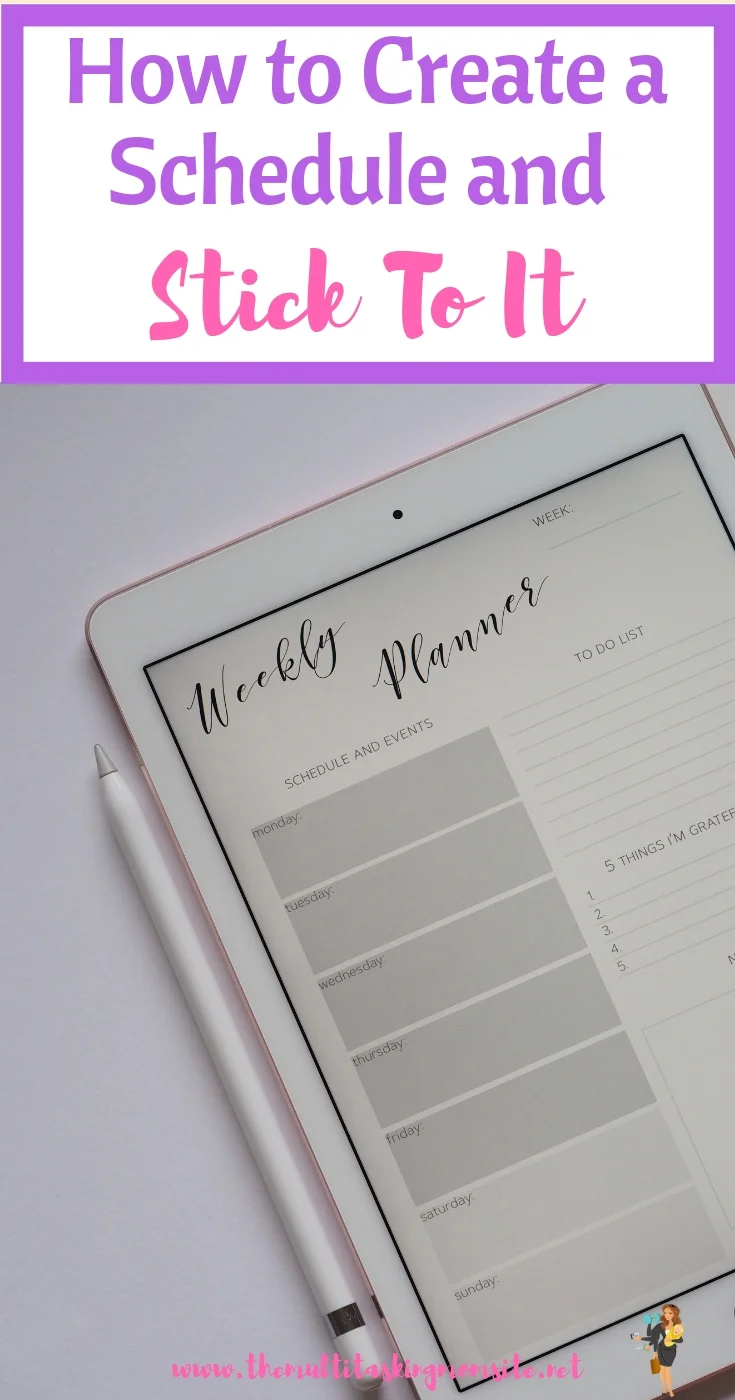One of the best ways to make efficient use of your time is to have a schedule. Having a plan for your day means you don’t have to waste time throughout your day trying to figure out what to do. You just execute on the plan.
Chris Ducker says if it doesn’t get scheduled, it doesn’t get done. More often than not, this is the case. Either we forget to do a thing because we didn’t write it down, or we waste so much time trying to figure out what to do next, we don’t actually have time to get it all done.
What’s worse is we probably could have gotten it all done if only we had a plan; a schedule.
How do you create an effective schedule?
Creating a schedule should be done no more than a week in advance. I mean of course you can add events to your calendar further in advance, but as far as creating a more detailed schedule, that should be done each week.
This is because these change and things can come up which will make it harder to stick to your schedule if you schedule out longer than that.
Therefore, each week, either in a planner or by printing out weekly calendar pages, you should plan out your week.
If you don’t have a planner, you can print out the weekly planner pages in my Resource Library. Just fill out the form below and I will send you a link to access this document and many other helpful printables for busy moms.
Step 1: Brain Dump
The first step in creating a weekly schedule is to do a brain dump of everything you need to get done. And I mean everything.
Set a timer for 5 minutes and write down everything that you need to do. This includes workouts, errands, food shopping, appointments, forms to fill out, permission slips to sign, EVERYTHING.
No editing should be done at this stage, you are just getting everything out of your head and onto paper.
Step 2: Review Your List
Next I want you to look over the items in your list. It is highly likely that there are more items on your list than can possibly get done in one week.
Get a new paper and divide it into 4 boxes. Label them “This Week”, “Next Week”, “Delegate”, and “Unnecessary”.
Review each item from your brain dump and put them into one of these 4 boxes. A doctor’s appointment for this week has to get done this week. The permission slip for a trip in 2 weeks can get put off til next week. You can delegate doing the dishes. Making a dish for the parish potluck, well that is unnecessary. It’s a nice to do, but only after the necessary things get done.
Step 3: Fill in the Items with Specific Times
Now you are finally ready to take out your calendar. The next step is to enter onto your calendar the things on your “This Week” list that have a specific time. This includes things like work, appointments, conference calls, practices, sporting events, etc.
The time for these items should be blocked off on your calendar including travel time if necessary.
Step 4: Fill in the time Consuming Tasks
Now that you have the set in stone items on the calendar, it is time to fill in the other larger tasks. This can include things like meal prep, grocery shopping, writing a report, and anything else that requires at least an hour of time.
In this step you may want to group several errands together. For example, going to the post office may only take 20 minutes, but it may be on the way to the pharmacy which is near the eyeglasses store. Each of these items may take less than an hour but if you combine them in one trip you can save time and the whole trip may take more than an hour.
In the same way, you can group other similar tasks when you have large chunks of time. Once the hour or more tasks are filled in, you can fit in any tasks that take between 30 minutes to an hour.
Step 5: Break The Remaining Items into 10 Minute Tasks
By this time, much of your calendar is likely filled in but there are probably more things left on your “This Week” list. Take whatever items are left on your list and divide them into tasks that can be done in 10 minutes. It can also be helpful to prioritize them.
This prioritized list of 10 minute tasks is your list for the week. Any time you have a few minutes between things on your schedule, you can refer to your list and do a 10 minute task. You won’t have to waste time trying to figure out what you can get done in that time frame since your list already divided into 10 minute tasks.
Step 6: Delegate and Decline
This step is super important. You need to actually delegate the tasks that you put on your delegate list. People don’t read minds, so everyone needs to know if you need them to pitch in.
It is also important to let the necessary parties know if you will not be doing the things on your unnecessary list. You can just politely decline. No huge explanation necessary. If you need tips on saying no to over-commitment, check out this post.
Things to Keep in Mind When Creating Your Schedule
The first thing to keep in mind is that you should not schedule every minute of your day. You need time to think and be creative. You also need time for accidents and the unexpected.
As a mom, you are well aware that things rarely go as planned. Therefore, you should account for that.
You should also make sure that every must do does make it on the schedule. You don’t want to accidentally forget something that has to get done because you didn’t write it down. Every non negotiable should be on the calendar.
Lastly, it’s not enough to write down a schedule if you don’t follow it. Make sure you keep your planner with you. Refer to it often, along with your 10 minute tasks list. Your calendar should be checked regularly throughout the day to make sure you are on track.
Daily Routine Examples
The following are some examples of daily routines for moms in different situations.
For a working mom, a weekday may look something like this.
6:00 Workout
6:30 Make breakfast and lunch
7:00 Wake and dress kids and dress self
8:15 Leave for work
9:00-12:30 Work
12:30 - 1:30 Lunch/pump/errands
1:30-5:00 Work
5:45 Make dinner
6:30 Family dinner
7:00 Hang out with kids
7:45 Put toddler to bed
8:00 Put baby to bed
8:15 Put kid to bed
8:35 Go through mail/papers from school/tidy up
9:00 Relax
10:00 Evening routine
10:45 Bed
For a stay at home mom, a weekday schedule may look something like this:
6:00 Workout
6:30 Make breakfast
7:00 Wake and dress kids and dress self
8:30 Bring kids to bus stop for pick up
8:45 Wash dishes/vacuum
9:30 Leave for Creative movement class
10:00-11:00 Class
11:30 Arrive home and make lunch
12:00 Lunch with the toddler and baby
12:30 Play with the kiddos
2:00 Put the babies for naps/laundry/chores
3:45 Get kid from bus stop
4:30 Homework time while babies play
5:30 Make dinner
6:30 Family dinner
7:00 Hang out with kids
7:45 Put toddler to bed
8:00 Put baby to bed
8:15 Put kid to bed
8:35 Go through mail/papers from school/tidy up
9:00 Relax
10:00 Evening routine
10:45 Bed
A weekend schedule might look like this:
6:00 Workout
6:30 Make breakfast/listen to podcast
7:00 Wake and dress kids and dress self
8:30 Pack bags for dance class
9:00 Leave for dance class
10:00-12:00 Dance Class
12:00 Have lunch
1:30 Get home and play with kiddos
2:00 Put babies to nap and do some chores
3:00 Hang out with oldest kid
4:00 Play with the kiddos/spouse
5:00 Make dinner
6:30 Family dinner
7:00 Hang out with kids
7:45 Put toddler to bed
8:00 Put baby to bed
8:15 Put kid to bed
8:35 Go through mail/tidy up
9:00 Relax
10:00 Evening routine
10:45 Bed
The most important thing in making a schedule is committing to it. If you keep putting off the things in your schedule, they won’t get done and your schedule becomes useless. Emergencies happen but for the most part it is important to keep your commitments both to others and yourself.
Are you good at keeping a schedule or is it a struggle? Let me know in the comments.
Cheers,
Emily













